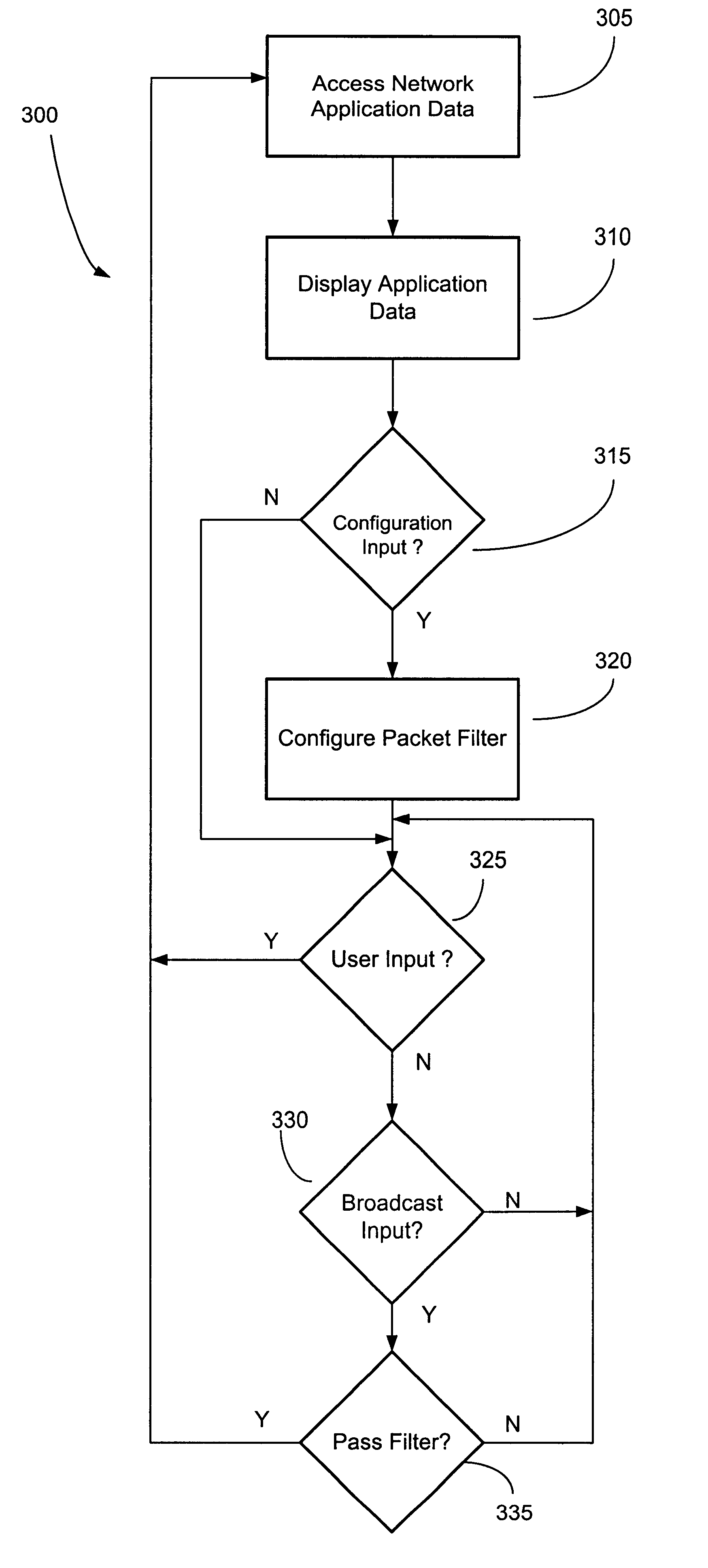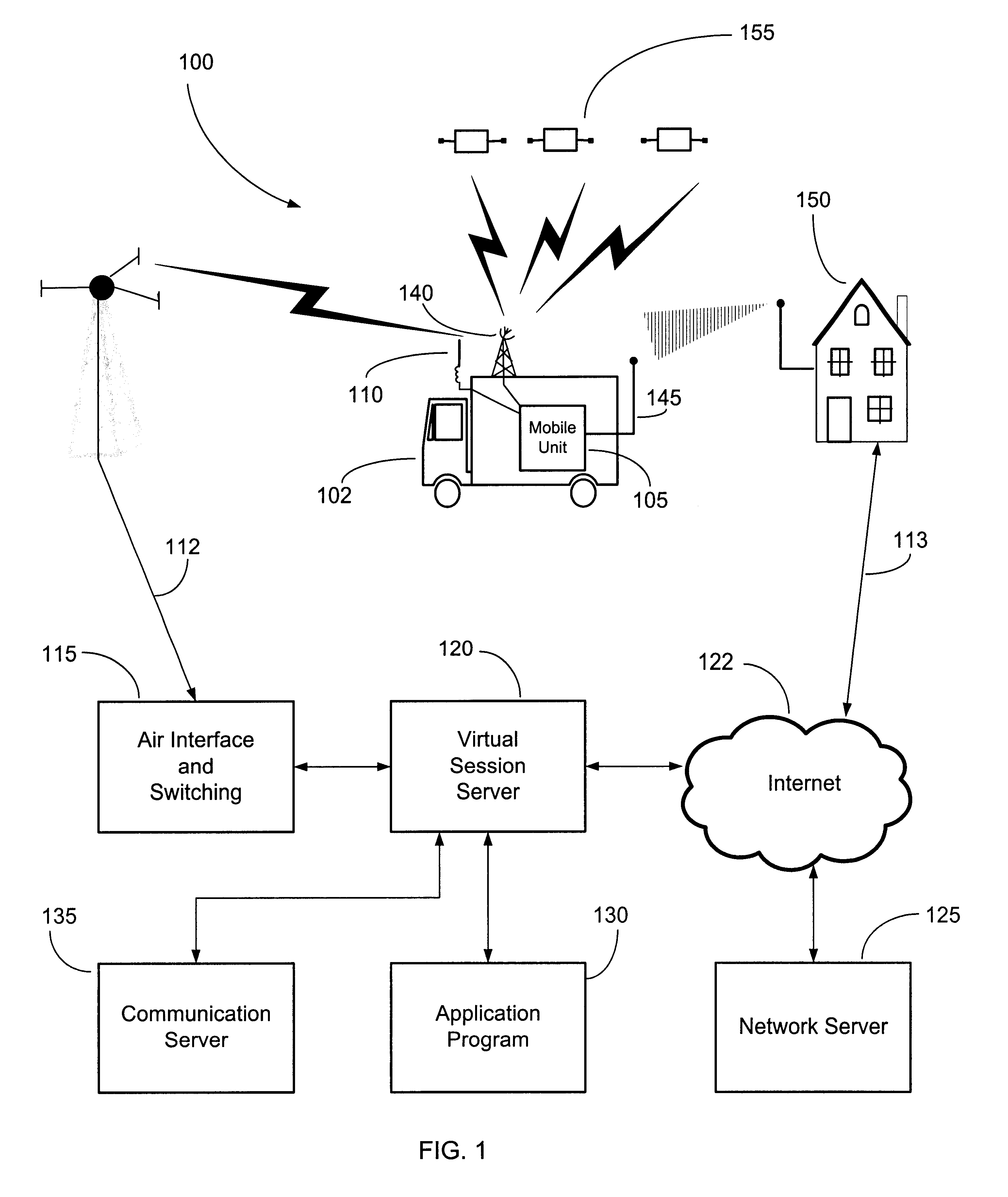Geographical web browser, methods, apparatus and systems
a web browser and geo-graphical technology, applied in the field of geo-graphical web browsers, can solve the problems of inability to automatically control a network application such as a web browser, and inability to provide local broadcast information
- Summary
- Abstract
- Description
- Claims
- Application Information
AI Technical Summary
Benefits of technology
Problems solved by technology
Method used
Image
Examples
embodiment 100
The illustrative embodiment 100 shows a mobile unit 105 with a full set of communication channels. In other embodiments, only a subset of these communication channels need be implemented. For example, in a simplest embodiment, only the local broadcast domain antenna 145 is implemented. This simple embodiment may be used to implement methods of processing as discussed in connection with FIGS. 3, 5a, and 5b. Some aspects of the present invention require the mobile unit 105 to include the network connection antenna 110 and at least one of the local broadcast domain antenna 145 or the satellite antenna 140. In general, an “air-interface antenna” generically applies to any antenna used to maintain a network connection, receive satellite data, transmit local broadcast domain data, receive local broadcast domain data, or perform other related air-interface functions.
The illustrative embodiment 100 may also be altered in other ways. For example, while three distinctly protruding antennas 11...
third embodiment
At the central server 714, the data is collected and analyzed. In a simple embodiment, information about traffic density and flow along different roadways may be organized and broadcast to the mobile unit 105, to serve an announcement function similar to the existing traffic reports heard on metropolitan radio shows during rush hours. Alternatively, the analysis may entail calculating a preferred route for a vehicle 102 optimizing for distance weighted by road conditions. In yet a third embodiment, the data collected on traffic flow and road conditions may be used to set adaptive road tolls in order to use market forces to regulate the operator's choice of route. The concept of adaptive road tolls are tolls, tariffs or fees on a segment of a road or highway that change or adapt to demand. As road space becomes more in demand, the tolls preferably adjust to regulate the use of a given segment of road. The adaptive road tolls enable the use of an efficient free market mechanism to all...
PUM
 Login to View More
Login to View More Abstract
Description
Claims
Application Information
 Login to View More
Login to View More - R&D
- Intellectual Property
- Life Sciences
- Materials
- Tech Scout
- Unparalleled Data Quality
- Higher Quality Content
- 60% Fewer Hallucinations
Browse by: Latest US Patents, China's latest patents, Technical Efficacy Thesaurus, Application Domain, Technology Topic, Popular Technical Reports.
© 2025 PatSnap. All rights reserved.Legal|Privacy policy|Modern Slavery Act Transparency Statement|Sitemap|About US| Contact US: help@patsnap.com



